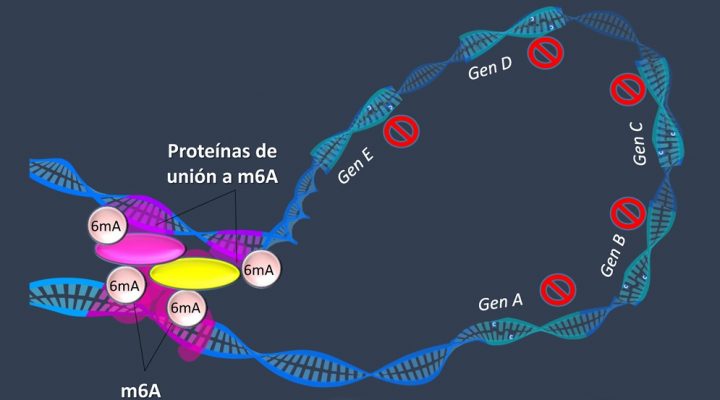BIOLOGICAL AND HEALTH SCIENCES
Trichomoniasis: scientists describe mechanisms that produce variations in the 3D structure of the DNA of the parasite that causes it
It is a sexually transmitted disease. CONICET experts identified one epigenetic modification that activates and deactivates groups of genes.
Trichomoniasis is the most frequent non-viral sexually transmitted disease (STD). It is caused by parasite Trichomonas vaginalis. It is estimated that about 156 millions of people are infected every year. Although in general terms, it has not symptoms in men, it can cause vaginal swelling, itching, yellow discharge and characteristic odor in women and is capable of causing complications when acquired during pregnancy. The chronic infection is associated with a greater risk of premature delivery, infertility, increased susceptibility to contracting and transmitting the HIV virus, and it has been recently linked to a marked predisposition to cervical or prostate cancer.
Despite its high incidence, the mechanisms used by T. vaginalis to develop the infection are still known. However, a group of experts of the Instituto Tecnológico de Chascomús (INTECH, CONICET-UNSAM-associated to CICPBA) has just taken a very important step to understand the way in which the expression of different genes of the parasite is regulated, some of them are key in this process. Along with researchers from the United States, the results have been published in Proceedings of the National Academy of Sciences (PNAS).
“It is believed that the symptomatic differences linked to the infection could be, in part, due to the existence of different strains of the parasite with diverse virulence capacity. These phenotypic variations suggest that even when the strains present practically identical DNA sequences, the expression of key genes is differentially regulated. Our research work proves that this can be determined by epigenetic mechanisms, which means that inheritable changes in the expression of the genes that are not the consequence of alterations in their DNA sequence,” explains Natalia de Miguel, CONICET researcher at the INTECH and author of the study.
INTECH experts focused on the analysis of the epigenetic modification known as DNA methylation. This is the biological process by which a group of small molecules –methyl- is added to specific DNA nucleotides. “Epigenetic modifications are known to be necessary for the normal development of different cell types. Nevertheless, their importance in T. vaginalis has not been analyzed so far. Our research work shows for the first time that this parasite contains high levels of methylation in adenines –one of the four nitrogenous bases of DNA-, a novel finding as this modification has been mainly described in bacteria. By means of an analysis in the distribution of this mark in the genome, we noticed that the methylation is preferably located in intergenic regions, that is to say, between genes,” the researcher describes.
“The novelty of this study is that we managed to see that the presence of these marks delimits regions of the genome that contain genes with similar levels of expression, where all the genes contained had an activated or deactivated state. This epigenetic modification allows three-dimensional DNA structures that brings functional elements of the genome into contact regulating the expression of the genes contained. It was surprising for us to discover that the formation of this type of 3D structures could be mediated by adenine methylation as this had not been previously described in any other organism or cell type.”
Considering the results obtained, INTECH professionals are excited that they can contribute to understand the origin of the infection and, eventually, lay the groundwork for the development of possible therapeutic targets to fight it.
By Marcelo Gisande.
References:
Lizarraga, A., O’brown, Z. K., Boulias, K., Roach, L., Greer, E. L., Johnson, P. J., … & de Miguel, N. (2020). Adenine DNA methylation, 3D genome organization, and gene expression in the parasite Trichomonas vaginalis. Proceedings of the National Academy of Sciences. DOI: https://doi.org/10.1073/pnas.1917286117
About the study:
Ayelén Lizarraga. PhD fellow. INTECH.
Zach Klapholz O’Brown. Harvard Medical School, Boston, EE.UU.
Konstantinos Boulias. Harvard Medical School, Boston, EE.UU.
Lara Roach. Harvard Medical School, Boston, EE.UU.
Eric Lieberman Greer. Harvard Medical School, Boston, EE.UU.
Patricia J. Johnson. University of California, Los Angeles, EE.UU.
